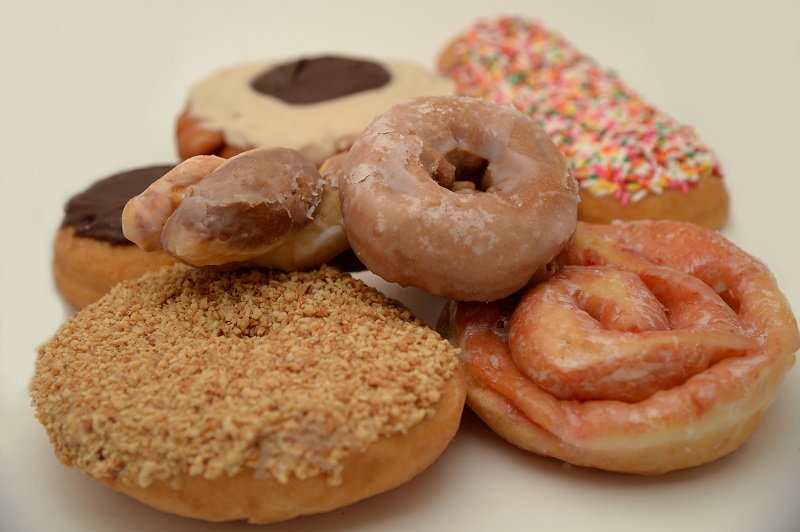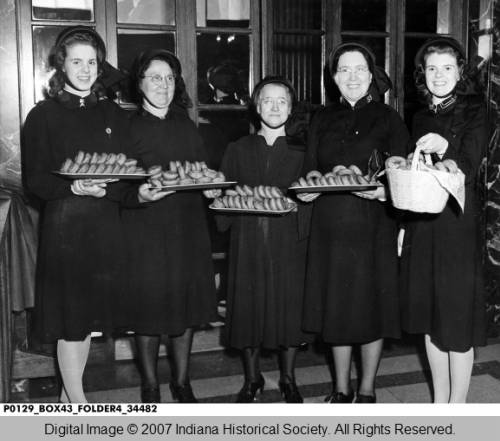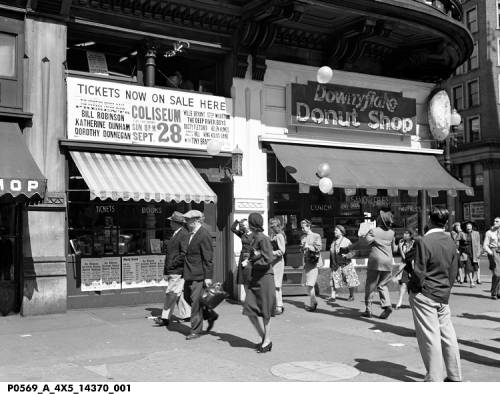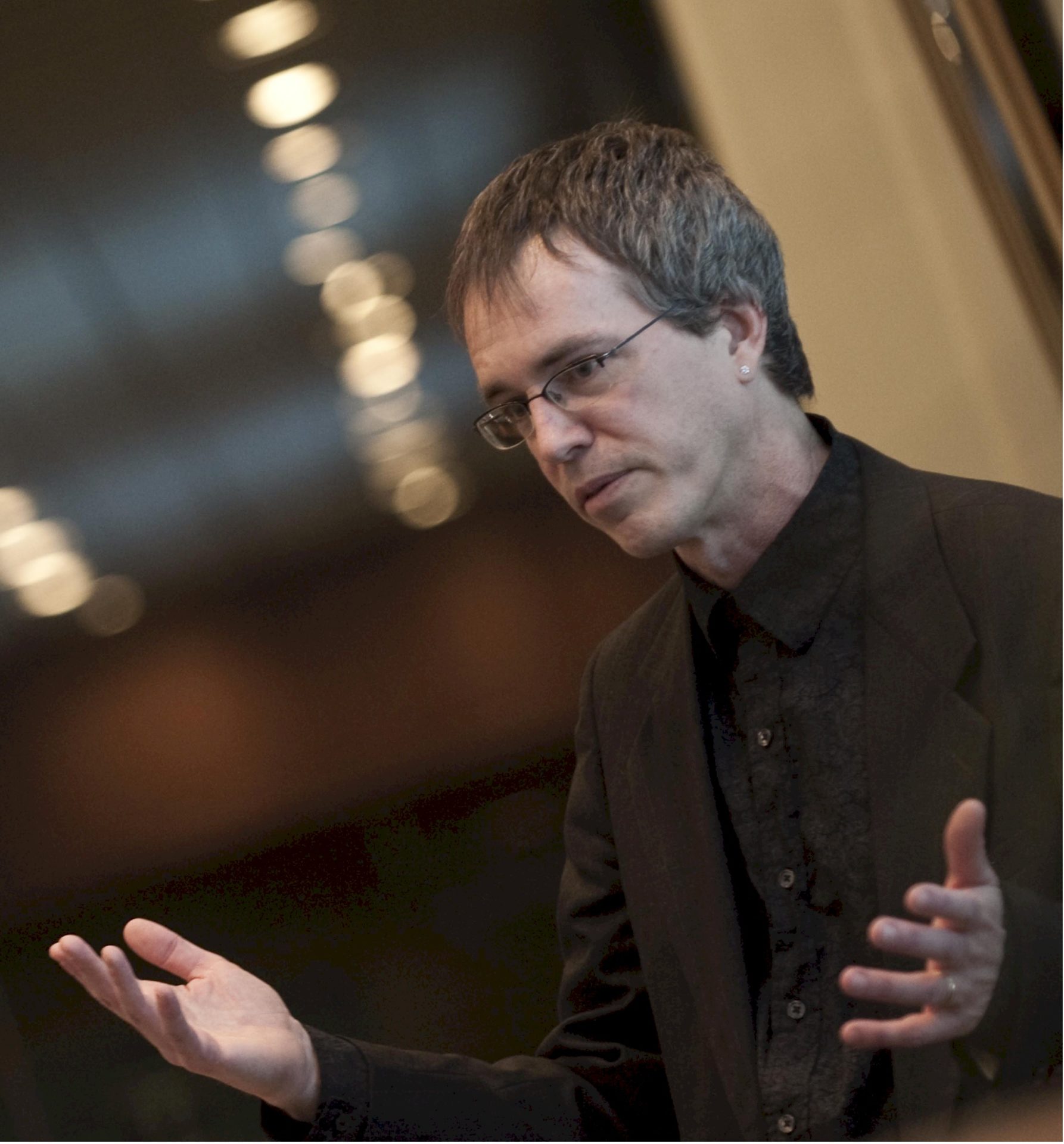
Purchase Tickets
Producing Desire: The Heritage of Doughnut Shops
June 1, 2021

Long’s Bakery has sat along Indianapolis’ West 16th Street since 1955, and it would be harder to find a more diverse group of Hoosiers than the line that snakes out the bakery’s door every morning. Long’s emerged in the midst of America’s Cold War embrace of the car and suburbanization, opening two years after the last streetcar was retired in Indianapolis. When the bakery’s striking “Hot Do-Nuts” sign first came on most residents were car commuters who entered the city along arteries like West 16th, but interstate displacement and construction soon transformed many of those commuter routes and residential settlement patterns. Doughnuts themselves have faced persistent critiques over their unhealthiness, and doughnut shops are sometimes stereotyped as dives peopled by working folks and overweight cops. Nevertheless, Long’s is part of a landscape of doughnut shops that has been celebrated by commuters, students, church groups, office workers, and a vast range of Hoosiers since the early 20th century.
Modest shops like Long’s and the national chains are prominent social spaces in many Indiana communities. Doughnut consumers often zealously champion particular chains or local shops or celebrate one variety while castigating others, but the contemporary doughnut is an enormously standardized food. Doughnuts have been produced for centuries: the origins of fried flour actually rests somewhere in the Neolithic, and nearly every global cuisine has savory or sweet fried pastries. Washington Irving used the word “dough nut” in his 1809 The History of New York to describe “enormous dish of balls of sweetened dough, fried in hog’s fat, and called dough nuts, or oly koeks—a delicious kind of cake, at present, scarcely known in this city, except in genuine dutch families.” Irving’s description of the olykoek suggests they were a Dutch pastry that was absorbed into emergent American cuisine in the 19th century. Doughnuts appear in an English cookbook’s 1803 edition, which included an appendix of American recipes, and doughnuts were staples of 19th-century American cookbooks. In 1917 the Salvation Army popularized doughnuts when Helen Purviance was among 11 young women sent to support American troops in Europe. Purviance and the Salvation Army “lassies” produced doughnuts to remind troops of their homes, and the Salvation Army continues to offer doughnuts to troops today.

Salvation Army Women Serving Donuts in Lobby at Terre Haute House; Martin Collection, Indiana Historical Society
Doughnuts became most common as a mass-produced food in the 1920s. Adolph Levitt developed a doughnut machine prototype in 1920 that was installed in his Harlem bakery window, and he marketed it and prepared flour mixes, which mushroomed into a chain known as Mayflower Doughnuts. Mayflower would eventually open a North Capitol Street bakery producing doughnuts for retail sale in 1942, but the Downyflake Doughnut shop opened in October 1927 on North Pennsylvania Street. Like Mayflower, Downyflake heralded the theater of watching doughnuts produced by their “truly marvelous” doughnut machine: “It performs the entire doughnut making task within itself. It cuts the doughnut floats it on top of the fat (which is heated electrically and kept at just the right temperature), fries the doughnuts on one side turns it over fries the other side and then ejects it from the machine untouched by human hands.”

The Meridian Street Book Shop on Monument Circle in Indianapolis sold tickets and sponsored many performing arts events in the 1940s. Here, a large signboard has been attached to the storefront advertising an “All-Star Revue” of African American talent at the Indiana Fairgrounds Coliseum in Indianapolis on September 28, 1947. The Downyflake Donut Shop and lunch counter next door was a franchise of the Doughnut Corporation of America in New York City.
These bakeries understood that the production of a doughnut could be fascinating theater: watching a doughnut machine was a pleasant anticipation that heightened desire. Scores of family owned bakeries covered cities like Indianapolis in the 1950s: in 1956, for example, Brackney’s Donuts (East 21st Street), the Judy Donut Shop (Rockville Road), and Knotty Pine Doughnuts (West Washington) offered doughnuts alongside chains including Downey Dunker (East Market and North Pennsylvania), Downyflake (West Market), Krispie Kreme (City Market and East 10th Street), and the many Roselyn Bakery locations.

This photograph shows the northwest corner of 48 East Washington Street. 48 East Washington Street is known as the Roselyn Building, constructed in 1963, after the first occupants which was the well-known Indianapolis-based Roselyn Bakery. City of Indianapolis, Department of Metropolitan Development, Indiana Historical Society
In the 21st century a host of doughnut producers have now turned to gourmet doughnuts. Gourmet doughnut shops defy the mass-produced doughnuts that have characterized American doughnuts for a century, instead appealing to a consumer imagination that desires superior flavor, embraces culinary creativity, and fancies they have a discerning and educated palate. Gourmet doughnut shops run by professional chefs use a host of organic and artisanal materials and make creative if idiosyncratic flavors. Indianapolis’ Doughnuts and Dragons, for instance, offers up doughnut varieties such as a key lime, blackberry cheesecake, and Hawaiian (Pineapple filling, orange glaze, and coconut).
Cosmopolitan foodies have flocked to gourmet doughnuts, but the masses have remained steadfastly committed to local doughnut shops, favored chains, and traditional glazed and cake doughnuts. Food is routinely a powerful social mechanism, and doughnuts have bonded little leagues, church groups, and families for generations. For instance, this May part of the rituals associated with the Indianapolis 500 will once more return as race fans and teams line up at Long’s and consume boxes of doughnuts. Doughnuts perhaps seem to be prosaic things, but bakeries, social contexts, and people with whom we eat doughnuts are at the heart of many of our lives and memories.
Title image courtesy of Jack’s Donuts.









